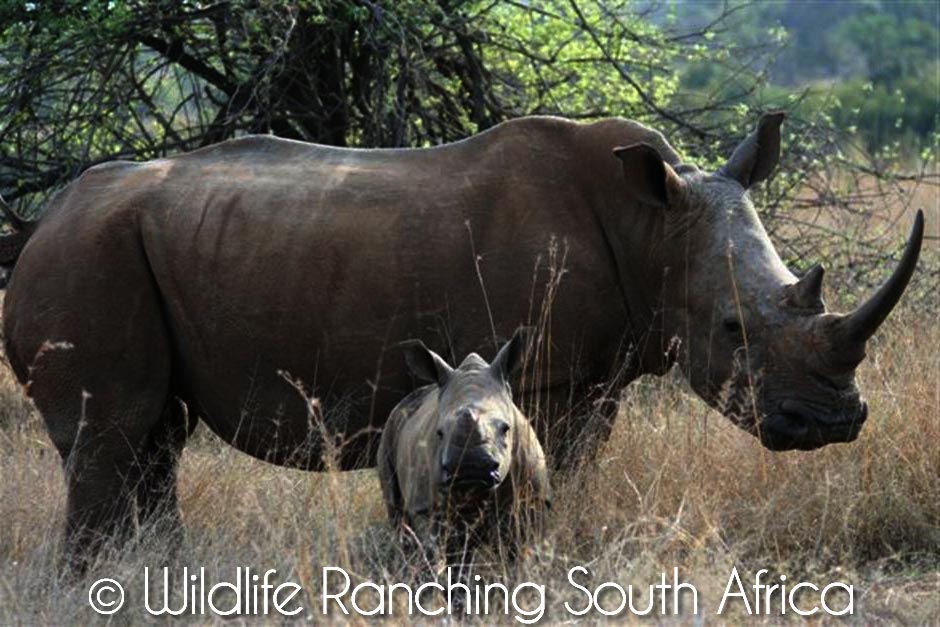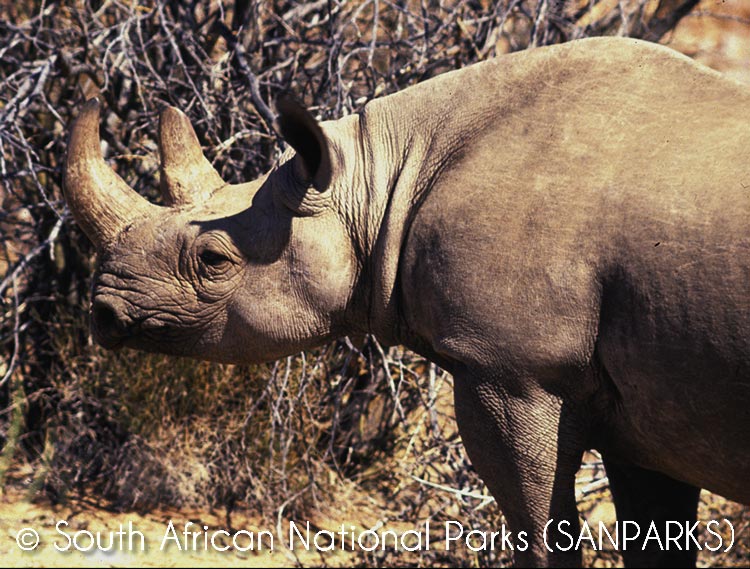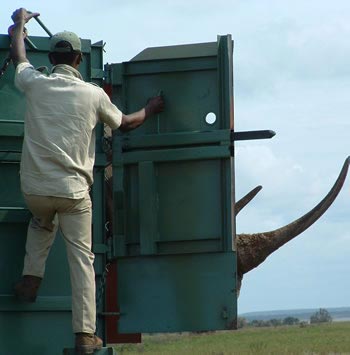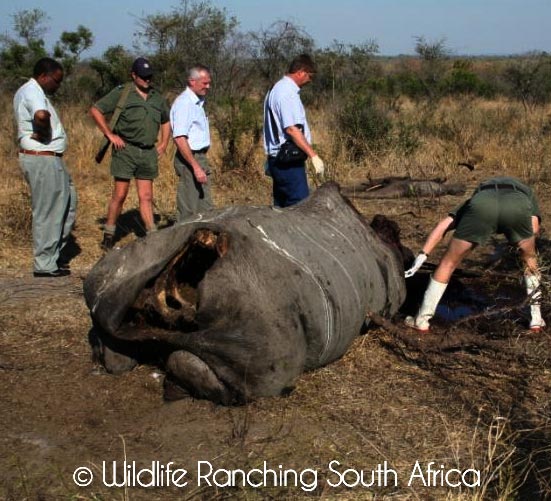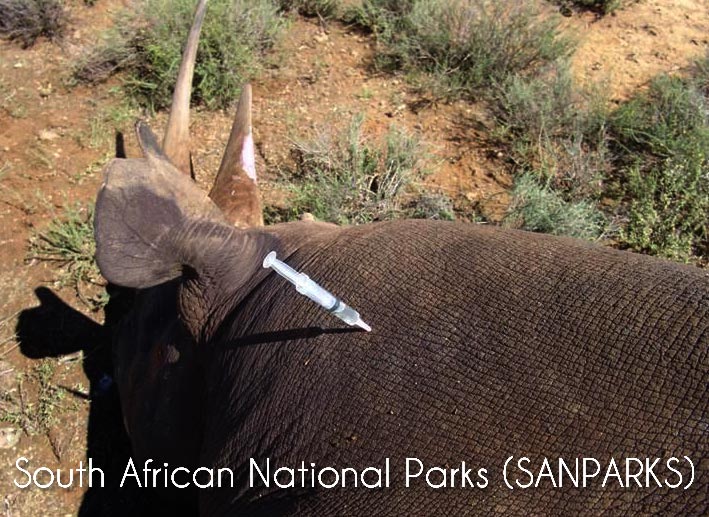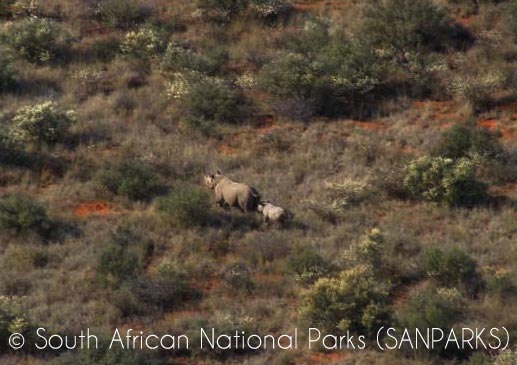Rhino dialogues introduction
Introduction and background
Whilst rhino poaching in many African range states remained a major problem between 1960 and 1995, particularly for the black rhino and northern white rhino, rhino poaching within South Africa was low. Between 1960 and 1980, numbers of rhinos poached were negligible, whilst between 1980 and 2007 the average rate of rhino poaching was nine animals per year. In 2008, however, a significant upsurge in rhino poaching took place in South Africa, with a reported 83 animals being killed illegally, and this trend has been escalating ever since.
In 2009, the official figure climbed to 122 rhinos poached; then to 333 in 2010; and 448 in 2011. While this rate of poaching does not yet exceed the population growth rate (meaning that the rhino population should continue to grow), should the rate of poaching continue to increase, it may eventually exceed the population growth, which would see South Africa’s rhino populations go into decline.
The overwhelming cause of rhino decline and extinction in the last 50 years has been poaching, simultaneously by demand for rhino horn used for traditional craft and traditional medicinal purposed by consumer nations in the middle-east and Asia.
The escalation in rhino poaching has amply exposed the weaknesses of current rhino protection measures. Technological innovations can offer exciting opportunities of bolstering rhino anti-poaching security measures.
Rhino stakeholders, very broadly defined, responded magnificently to the government’s invitation to discuss their concerns regarding the poachers’ onslaught on the South African rhino and to work together to devise strategies that could provide relief to, and rescue, the country’s embattled iconic mammal from the threat of extinction
Rhino dialogues consist of the views of organisations and individuals with an interest and stake in the sustainable conservation of the rhino population in South Africa. The aim of these dialogues is to solicit well-considered views on how best to secure the protection, safety and sustainable conservation of the rhinos in the country.
Current state of the Country’s rhinoceros species
Currently, only five rhinoceros species remain in the world. In the last decade, two rhino sub-species, namely, the Western Black Rhinoceros in Cameroon and the Indochinese Javan Rhinoceros in Vietnam have become extinct. In Asia there are populations of Dicerorhinus sumatrensis, Rhinocereos uniconis or Sumatran rhino (220 animals and categorised as critically endangered) and Rhinocerous unicornis, the Indian rhino (2 900 animals) (DEA, 2013).
In Africa there are two species, namely, the white rhino (20 000 animals) and black rhino (4 800 animals) which are critically endangered (DEA, 2013).
In South Africa, the white rhino is the dominant species. According to, the Rhino Issue Management Report (2013), over 90 per cent of Africa’s white rhino occurs in South Africa. Approximately 1 400 white rhino occur in Namibia, Botswana, Swaziland, Zimbabwe and Mozambique and small numbers are present in Kenya, Uganda and Tanzania.
By the 1930’s the black rhino had almost disappeared in South Africa with only 110 animals surviving in game reserves. The largest population of white rhino in the world exists in the KNP. In the year 2010, estimates indicated the presence of 10,621 white rhino in the park (DEA, 2013).
Since the late 1990’s, white rhino have been translocated from the KNP for biodiversity and conservation reasons and sold to generate conservation revenue. By the year 2010, 1 402 rhinos had been removed, largely to other conservation areas, with no adverse effects on the population as numbers continued to increase in the park (DEA, 2013).
The overwhelming cause of rhino decline and extinction in the last 50 years has been due to poaching, stimulated by demand for rhino horn used for traditional craft and traditional medicinal purposes by consumer nations in the middle-east and in Asia.
Conservation of rhinos
Between the years 1991 and 2010, conservation efforts resulted in an average annual net meta-population growth rate of 7.2 per cent for white rhino and 4.9 per cent for black rhino (DEA, 2012). A population growth rate of five per centis needed annually from 2012 to result in a net population after mortality of at least 25 000 white rhino by the end of 2016 (DEA, 2012).
The safety and security of the South African rhino populations remains an essential element of any rhino strategy if the rhino is to survive therefore various strategies have been proposed to ensure the conservation and growth of the black and white rhino. To date, improved coordination and collaboration within the various security and intelligence agencies, domestically and internationally has been put in place to fight rhino poaching at large.
South Arica has been largely responsible for the conservation of the African Rhino species. By 2012, South Africa was home to 83 per cent of Africa’s rhinos and just under 75 per cent of all rhinos world-wide(DEA, 2013).
By the end of 2010, South Africa conserved more black rhinos (1,915) in the wild than any other range State and accounted for approximately 39 per cent of the continental total by 2010 (DEA, 2013).
Rhino poaching
The rhino poaching in South Africa is largely due to the demand of the horn which has long been prized as an ingredient in traditional Asian medicine, although this has been denied recently by both China and Vietnam (Montesh, 2012).It has been claimed that rhino horn possesses cancer-curing properties as well as the ability to cure impotence, despite there being no medical evidence to support the assertion.
Each rhino horn weighs around 10kg and currently fetches over US$ 20,000 per kilo on the Asian market (Montesh, 2012). The current wave of rhino poaching is being committed by sophisticated criminal networks using helicopters, night-vision equipment, veterinary tranquilisers and silencers to kill rhinos at night while attempting to avoid law enforcement patrols.
The criminal syndicates operating in South Africa have been described as highly organised and coordinated, using advanced technologies – this is not typical amateur poaching. Since the year 2000, the number of rhino poaching incidents has been increasing (Montesh, 2012).The Department of Environmental Affairs (DEA) also recently showed that 668 rhinos were killed by December, 2012. Overall, the total number of rhinos killed per year in South Africa over the past five years has shown a continued escalation, even if there are fluctuations in the daily rate of poaching (Montesh, 2012).
Methods of poaching
The techniques used to kill rhinos have changed in recent years, the killing of rhinos typically involves shooting with guns, usually AK47 assault rifles and the skilled marksmen to kill rhinos instantly with heavy-caliber weapons, for example, point 375 and point 458 rifles are increasingly used (Montesh, 2012).
The advent of darting rhinos with immobilisation drugs either from a helicopter or from the ground and removing their horns has occurred in recent years.
This method of “hunting” is silent with a lower risk of detection than the sound of gunshots.
These methods of rhino killing can only be conducted by trained professionals who have access to restricted veterinary medicines and other specialised equipment (Montesh, 2012).
Response to the current state of rhino poaching
The government developed a the National Strategy for the Safety and Security of Rhinoceros Populations and Horn Stocks in South Africa which were designed to combat the increasing poaching threat. The Strategy seeks to outline the following:
- Implementing an immediate action plan aimed at mitigating the current threat to the rhino population posed by the escalation in poaching and the illegal trade in rhino horns and associated by-products;
- Securing the shared commitment of government (at national and provincial level), private land owners, local communities and international stakeholders, as well as the necessary financial and manpower resources and political will to implement this policy;
- Supporting the establishment of a national co-ordination structure for information management, law-enforcement response, investigation and prosecution;
- Developing an integrated and co-ordinated national information management system for all information related to rhino species in order to adequately inform security related decisions; and
- Investigating proactive security-related measures aimed at possibly facilitating a better understanding for any possible future regulated and controlled international trade in the species, and any associated by-products.
- South Africa has also signed a Memorandum of Understating with Vietnam in the year 2012 covering a whole range of issues including Rhino poaching.
Sources
- Department of Environmental Affairs, 2011-2012. National Environmental Compliance and Enforcement Report.
- Department of Environmental Affairs, 2013. Rhino Issue Management Report.
- Montesh M, 2012. Rhino Poaching: A New form of Organised Crime.



